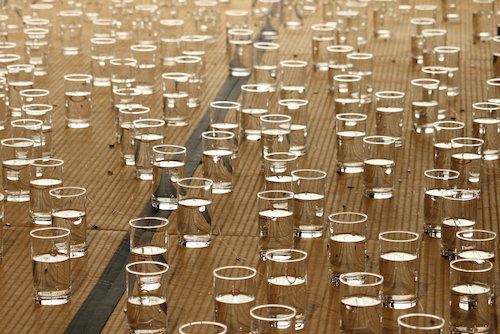It is important to appreciate the beautiful sound of nature. Meanwhile, it is intriguing to manipulate such sounds through scientific methods. Browsing through my friends’ posts, I find my friend Mike Jin’s post 04 about the Chijikinkutsu really interesting.
Chijikinkutsu represents the art of arranging a series of equipments that take advantage of magnatism to collide and drift to make sounds. Originating from the traditional sound ornamentations for Japanese gardens, this sound equipment uses floating needles in the glasses of water which can be magnetized through electricity. Driven by the magnetic force, the needles will hit the glasses and make delicate sounds. By controling the spatial arrangement of such glass tumblers and the electric current size of each coil attached to the them, people will be able to enjoy the different pitches and magnitudes of the sounds by the needles. A beautiful, yet to some extent intentionless composition of sounds are generated. Like my friend Mike mentioned, such an arrangement is not only a sound art but also a beautiful visual appreciation decorated by the plain, glass tumblers arranging from the near to far on the ground. Meanwhile, Mike mentioned it would be more interesting to carry out such sound equipment around the globe because of the variance across the magnetic field in different countries. However, I have some doubts about that because the magnetic fields are actually initiated temporarily by the small coils attached on the glass tumblers. Maybe it won’t have to have too much relationship with the real geomagnetic field. On the other hand, it would be definitely fun to utilize different materials other than the glass and needles around the globe to make such sound art, and that would be fantastic for different cultures to communicate and create diverse range of sound art compositions.
Click here to see my friend Mike Jin’s post
Click here to visit the sound art website page

![[OLD FALL 2019] 15-104 • Introduction to Computing for Creative Practice](wp-content/uploads/2020/08/stop-banner.png)